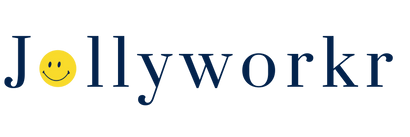
When I first started my HR career, I worked in an all-female team. That is, apart from our male HR Director. This was back in the millennium in the era after Personnel had changed its name to HR and gained its status as a strategic function (and therefore a seat at the boardroom table). While something to celebrate, there was still a battle to be had with some managers who continued to view us as the old transactional personnel service. I remember (metaphorically) rolling my eyes every time a manager sniggeringly referred to us as the ‘human remains’ team.
Two decades on, and while HR still has that seat at the boardroom table, all too often it’s occupied by a man.
If you’re a woman forging your career in HR, you may well have experience of reporting to a male HR Director too. Or perhaps you’re a male HR Director whose team are predominantly women, and you recognise that more needs to be done to address the gender balance. Whichever side of the glass ceiling you’re on, read on for some thoughts on effecting change.
Let's look at the maths
Chances are it presents an irony to be a male HR Director, the figurehead of a predominantly female team, and the person in the organisation for whom the responsibility of equality and diversity firmly rests. And it's still likely that not only is your team predominantly made up of women, but your organisation’s Board is predominantly made up of men.
The current percentage of industry board level appointments held by women stands at 33%. This is good news to an extent, but the government target of getting a third of women into senior positions below board level is still some way off. You can see the Hampton-Alexander Review of FTSE 350 companies for more on the government’s targets here.
While the figure of 33% relates to FTSE listed companies, the picture is the same in other sectors too. The Institute of Fundraising’s report ‘Missing Out: Understanding the Female Leadership Gap in Fundraising’ reports that 76% of employees in fundraising are women. But in the top 100 fundraising organisations in the UK, only 52 women hold senior board level positions. The maths simply does not add up. Where did the other 24 women go? They sure aren’t hiding in the boardroom!
This trend is repeated in other sectors too. According to the Institute of Government, in 2018 the majority of staff in the Civil Service (54%) were women. However, at the time of the report women still only held 43% of the senior roles.
How do the figures stack up in your organisation?
Permission to smash the glass ceiling granted... but find your own hammer first!
Later on in my career, now in a different organisation, but once again with a male HR Director, I was called in to a meeting with him. He told me that I could, and should, be aiming for the role of HR Director in the future and that I needed to think about how I did that.
Well, being completely honest, I was quite flattered to begin with. He’d given my ego a boost, but not my career. Why? Because there was little in the way of direction in how best I should map out my journey.
The director’s intention was nothing but noble. It came from a good place and, for a short time, it left me feeling buoyed. For me, though, there were other doubts about where my career in HR was going, and I eventually decided to branch out and work for myself. But for another woman aiming at reaching HR Director level, would this instruction to think about how she got there have been enough?
As with anything in life, we rarely succeed alone and, on reflection, the thing that I believe would have made all the difference to me in charting out my journey would have been a mentor. This article from the Telegraph shows the benefit to women, and to organisations, of mentoring in business. Perhaps this is one way to help more women crash through that ceiling?
Who's the more emotionally intelligent?

Be honest. Did you immediately assume that women are, hands down, more emotionally intelligent than men? Then you’ll be interested to read this article from Forbes. Spoiler alert: men and women are equal!
The really interesting thing is that while men and women are equals in overall emotional intelligence, the rub comes from the fact that the strengths that they have tend to be different. Men often score higher in traits such as decisiveness, confidence and assertiveness. And how interesting that these are traditionally seen in society as leadership traits.
On the other hand, women often score higher on the skills of collaboration, support and relationship building. The things not traditionally seen as leadership skills. Although there are, perhaps, signs that things are changing. The recent handling of COVID-19 by female leaders from across the world, has shone the light on how these skills may be of equal value after all.
There’s a real danger for equality when society continues to hold these views about skills because it creates unconscious bias. HR Directors can do so much to prevent this, and a great place to start is with the recruitment process for Director-level positions. This podcast from the CIPD is worth a listen. It explores the issue of unconscious bias and the use of gendered terminology in the recruitment process.
Equality and diversity are important across your whole organisation. And if you don’t want to miss out on recruiting great talent, then take note. This 2015 PWC survey showed that 85% of female millennials indicated that an employer’s policies on diversity, equality and workforce inclusion influenced where they wanted to work. Wouldn’t it be interesting to know where those women are working 5 years on?
Increased flexibility too much of a stretch?
There is no getting away from the fact that the physiological differences between men and women will often mean that there’ll be times in a woman’s life when a flexible approach to work and career is needed. From maternity leave to the menopause, and everything in between, women have a different experience of life.
Providing flexibility in order to attract, recruit and retain the best people at every level of an organisation is actually to everyone’s benefit. This ACAS YouGov poll commissioned in 2019 shows that 53% of respondents identified work life balance as the most important issue in their working lives. But it’s also interesting to look again at the Institute of Fundraising report mentioned earlier, because while 94.5% of women respondents identified workplace flexibility as important, so, too, did 83.6% of male respondents. It’s a win-win!
Many organisations have had a short, sharp, flexible working shock in the last few months. With enforced home working, and a greater reliance on technology for day to day operations, perhaps now’s the time to look at how flexible working can be carried over into the ‘new normal’?
It's not all one-sided
There’s plenty that individual managers can do to support their female staff and capitalise on the diversity of their teams to create leaders for tomorrow. But as female HR officers, advisers or administrators we should feel empowered to play our role in shaping our futures too. Attend networking events, make new contacts and find inspiring women from whom you can learn. Ask them how they broke through the glass ceiling. Oh, and ask them from me whether they had to find their own hammer!
Check out Jollyworkr's HR training suite here



